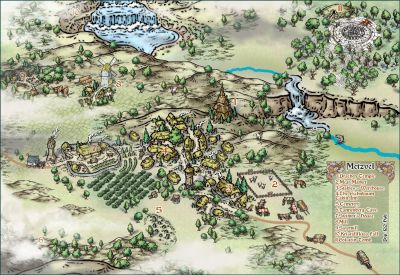
Monsen
Monsen
About
- Username
- Monsen
- Joined
- Visits
- 693
- Last Active
- Roles
- Administrator
- Points
- 8,947
- Birthday
- May 14, 1976
- Location
- Bergen, Norway
- Website
- https://atlas.monsen.cc
- Real Name
- Remy Monsen
- Rank
- Cartographer
- Badges
- 27
-
Province borders on Overland Hex map
-
Some Lines of Grid Show as Double
When CC3+ renders a map to an image, it does so in sections. It does this because there usually isn't enough memory to calculate the entire image in one go. This value controls how many pixels each such pass should contain. The default value is on the lowish side when it comes to modern computers, so increasing it allows us to export the drawings in fewer passes, and the issue you were having usually occurs on the edge of each pass.
-
Some Lines of Grid Show as Double
-
Community Atlas - River Watch - Abhannfair Caves, 13
-
Problem with Layers
-
Is there a way to divide a City Map into smaller Battle Maps?
The PPI setting is a meaningless value outside of print calculation. Just completely ignore it and always just concentrate on the width/height in pixels.
The important thing to check is that both height and width is set correctly, since CC3+ will crop the value if necessary to retain the ratio. (Well, technically, all you have to do is to get one correct, and just set the other one to a really high value, since it will be capped at the max allowed by the aspect as long as the rectangular section is specified correctly.)
When doing the rectangular export, for perfect precision, I recommend turning on cursor snap so you don't have to align them perfectly manually.
To make sure the export is done correctly from CC3+, you should be able to check that the pixel dimensions are correct from the file properties in Windows (or by opening it in an image editor)
-
Noob question I am sure...
To hide things from your players, I would consider putting things on different layers, then you can reveal one layer at a time as they explore the area. You'll have to predetermine which chunks to reveal of course, but this is a good idea revealing things piece by piece.
For elevation, as JimP suggested, contours are the best. Since you are using Mike Schely Overland, there is a contour tool called Height Contour in the :CC2MI: catalog. It looks white int he preview, but it is transparent, and you can lay multiple on top of each other to lighten it bit by bit.
-
Combining Paths in Perspective 3
I would consider one of these approaches here:
- Join paths to polys and create a multipoly of your floor before putting it into perspective. The disadvantage with the multipoly approach is that it is difficult to edit after the fact.
- Split up the original trace into separate polygons for the rooms and corridors. This gives you a lot more surfaces, but it is easier to handle and edit. This approach will require a bit more processing for your trace before turning it into perspectives though.
-
map borders
Sure. If you have them as an image file, just use Draw -> Insert file to insert it into the drawing (Note that CC3+ inserts a reference to the file, so if you later move or rename it, your map will display it as a missing image).
If it is a tiling texture, you can import it as a fill style from your map (Tools -> Import bitmap fill style or just create it manually from the fill style dialog) and you can then use it as a fill when drawing things like polygons.
-
map borders







